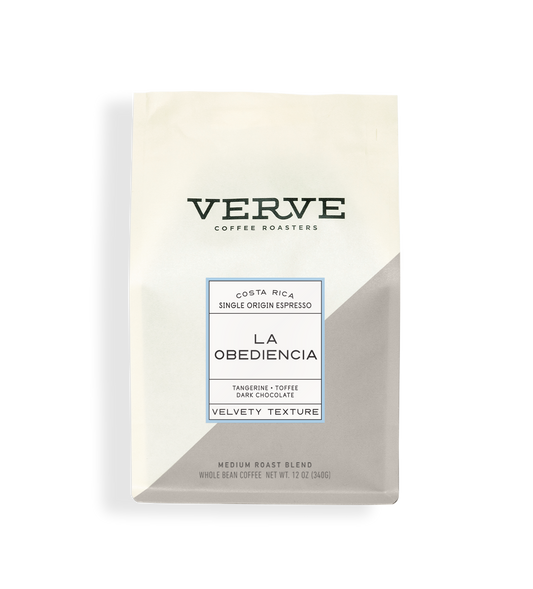How SOE Single Origin Espresso Improves Your Daily Coffee Ritual
Recognizing Coffee Beans: the Journey From Espresso to Blended Coffee Beans

The Origins of Coffee: An International Perspective
While you could believe of coffee as a modern staple, its beginnings trace back centuries, intertwining with cultures throughout the globe. The story begins in Ethiopia, where legend states a goat herder called Kaldi found the energizing results of coffee beans after observing his goats romping energetically after consuming them.
As profession courses increased, coffee made its way to Europe in the 17th century, rapidly getting appeal. Each culture included its one-of-a-kind twist to coffee prep work, enriching its background.
Growing and Harvesting of Coffee Beans
As coffee's journey advanced, the focus moved to the growing and harvesting of particular bean varieties, especially those used for coffee. You'll find that coffee beans usually come from Arabica or Robusta plants, each offering unique tastes. The excellent growing problems include high elevations and abundant, well-drained soil, which improve the beans' top quality.
During the harvest, choosing methods differ. In some areas, workers hand-pick ripe cherries, guaranteeing only the finest fruit goes to processing. In other locations, mechanical farmers are made use of, particularly on larger farms. Timing is crucial; you wish to collect when the cherries get to peak ripeness for maximum flavor.
Once harvested, the beans are prepared for processing, which is necessary in determining their last preference. Understanding the growing and collecting procedures offers you insight into what enters into your favored espresso, enriching your appreciation for each and every mug.
Processing Approaches: From Cherry to Bean
Since you've found out concerning collecting coffee beans, let's check out exactly how those cherries transform into the coffee beans you enjoy. You'll see how various harvesting methods impact taste, followed by the important steps of fermentation and drying out. We'll damage down the milling and grading process that determines your coffee's top quality.
Harvesting Techniques Described
When it comes to coffee, comprehending harvesting strategies is vital, since they straight impact the flavor and quality of the beans you delight in. Careful selecting entails hand-picking just ripe cherries, ensuring you get the finest top quality beans. Ultimately, the option of collecting method can substantially affect your coffee experience, so it's worth knowing just how those beans made it to your mug.
Fermentation and Drying
After collecting, the next action in handling coffee beans play a substantial function fit their taste. You'll discover that fermentation is important, as it aids damage down the mucilage bordering the beans, improving their preference profile. Depending upon the method, this process can last from a couple of hours to numerous days, with differing results based upon temperature level and humidity.
Sun-drying allows the beans to soak up flavors from the environment, while mechanical drying out assurances consistent moisture degrees no matter of climate. Correct drying is vital to stop mold and mildew and maintain the beans' quality, eventually influencing your mug of coffee.
Milling and Grading Refine
As fermentation and drying out established the stage for taste advancement, the milling and grading process warranties that only the finest coffee beans make it to your cup. This stage includes removing the external layers of the coffee cherry, including the parchment and husk. Top quality beans get a greater grade, resulting in a richer coffee experience.
Toasting Techniques: Unlocking Flavor Prospective
When you roast coffee beans, the technique you select can dramatically impact the flavor profile. Comprehending the partnership in between time, temperature level, and toasting methods is crucial to exposing the capacity of your brew. Let's explore how these components come together to create the perfect mug.
Toasting Techniques Clarified
While you could think that all coffee toasting methods yield the same results, the fact is that each strategy exposes distinct flavor capacities in the beans. Drum roasting utilizes a rotating drum to equally disperse heat, boosting caramelization and producing site here a balanced taste. Air roasting, on the other hand, circulates hot air around the beans, promoting a lighter roast with obvious acidity.

Effect On Flavor Profile
Various toasting approaches not only influence the process but additionally greatly affect the taste profile of the coffee beans. When you select a light roast, you'll experience bright acidity and floral notes, showcasing the bean's beginning. In contrast, a medium roast balances level of acidity with sweet taste, commonly revealing chocolatey undertones. Dark roasts, on the various other hand, highlight bold, great smoky tastes, sometimes concealing the bean's unique qualities. Each strategy discloses different oils and compounds, leading to a broad array of flavors. By explore numerous roasting styles, you can uncover which profiles resonate with your palate. Comprehending these nuances aids you value the artistry behind your mug of coffee, boosting your total experience with every sip.
Time and Temperature Level Factors
To release the full flavor possibility of coffee beans, both time and temperature during the roasting process play substantial duties. When toasting, you'll find that higher temperatures can swiftly develop tastes, yet if you hurry it, you may end up with burnt notes. Alternatively, reduced temperature levels permit a much more gradual flavor development, showcasing the beans' unique features.

Timing is just as important; expanding the roast as well long can result in a loss of level of acidity and brightness, while too brief a roast might leave the beans underdeveloped. Locating that wonderful spot calls for method and experimentation. By readjusting these elements, you can reveal the abundant, complex tastes hidden within each bean, developing an absolutely exceptional coffee experience.
The Art of Blending: Crafting Special Coffee Profiles

Start by picking a base coffee that supplies a solid foundation. A brilliant Ethiopian bean can bring fruitiness, while a rich Brazilian coffee includes body.
As you blend, bear in mind that each combination narrates. You're not just making coffee; you're producing an experience. So, take your time, taste frequently, and take pleasure in the journey of finding your signature blend.
Developing Approaches: Exactly How Prep Work Impacts Flavor
Mixing coffee opens up a domain name of flavor opportunities, yet exactly how you brew that mix can substantially affect your last mug. On the other hand, a pour-over highlights the coffee's clearness and brightness, ideal for learn the facts here now showcasing delicate notes.
Coffee, with its high stress, creates a concentrated shot that emphasizes sweet taste and crema. If you prefer a lighter mixture, take into consideration a cool brew method; it yields a smooth, less acidic taste.
Adjusting variables like water temperature, grind size, and brew time can transform your coffee's profile. Welcome the art of developing to discover the flavors concealed in your coffee blends.
The Future of Coffee: Sustainability and Technology
As the coffee sector advances, sustainability and technology are becoming important for addressing environmental challenges and conference consumer demands. You'll discover that more coffee companies are embracing environment-friendly methods, from sourcing beans morally to executing sustainable farming strategies. These changes not just help the world yet also enhance the high quality of the coffee you take pleasure in.
You could see innovations like naturally degradable packaging and water-saving developing techniques that lower waste. Advanced technology, such as blockchain, is also becoming popular, guaranteeing transparency in the supply chain, which enables you to map your coffee back to its beginnings.
On top of that, buying local communities and supporting farmers through fair trade efforts promotes an extra lasting coffee ecosystem. As you sip your next cup, bear in mind that your selections can contribute to a brighter future for coffee. By choosing sustainable brands, you're not simply enjoying a beverage; you're making a positive impact on the world.
Frequently Asked Concerns
What Is the Distinction Between Arabica and Robusta Beans?
Arabica beans are smoother, sweeter, and have a greater level of acidity, while robusta beans are stronger, much more bitter, and consist of even more high levels of caffeine. You'll see these distinctions in taste and fragrance when making your coffee.
How Does Altitude Affect Coffee Bean Taste?
Altitude influences coffee bean taste significantly. Higher altitudes generate beans with brighter level of acidity and complicated tastes, while lower elevations commonly generate beans that are larger and less nuanced. You'll see these differences in your mug!
What Are the Health Conveniences of Drinking Coffee?
Consuming alcohol coffee can increase your power, improve psychological focus, and even boost physical performance. It's abundant in antioxidants, may decrease the risk of specific conditions, and can promote a much healthier metabolism when eaten in moderation.
Can Coffee Beans Be Reused for Developing?
Yes, you can recycle coffee beans for brewing, however the taste may be weak. If you enjoy exploring, try reusing them in various ways, like chilly mixtures or contributing to smoothies for an additional kick.
How Should I Shop Coffee Beans for Quality?
To keep your coffee beans fresh, store them in a closed container in a cool, dark place. Stay clear of exposing them to light, warm, or wetness, as these variables can rapidly degrade their taste and scent.
Understanding Coffee Beans: web the Trip From Coffee to Blended Coffee Beans.
Currently that you've discovered concerning harvesting espresso beans, let's explore exactly how those cherries transform into the coffee beans you like.When you roast coffee beans, the technique you pick can significantly affect the flavor account - Single Origin Espresso.While you may believe that all coffee toasting techniques produce the exact same outcomes, the reality is that each method exposes one-of-a-kind taste possibilities in the beans.Various toasting techniques not only influence the process however likewise considerably influence the taste account of the coffee beans